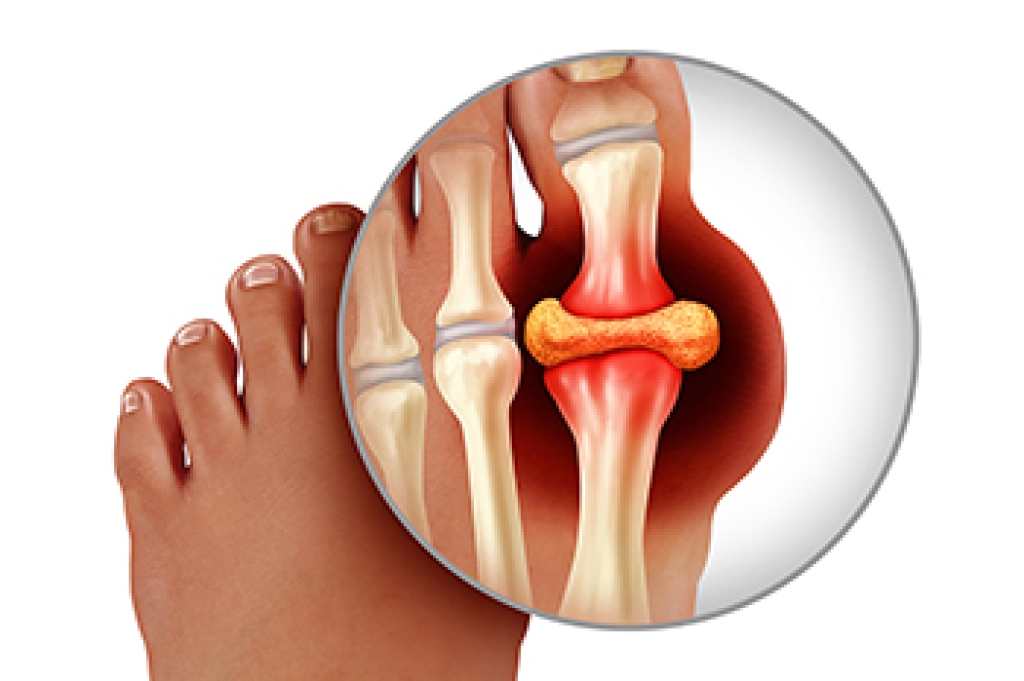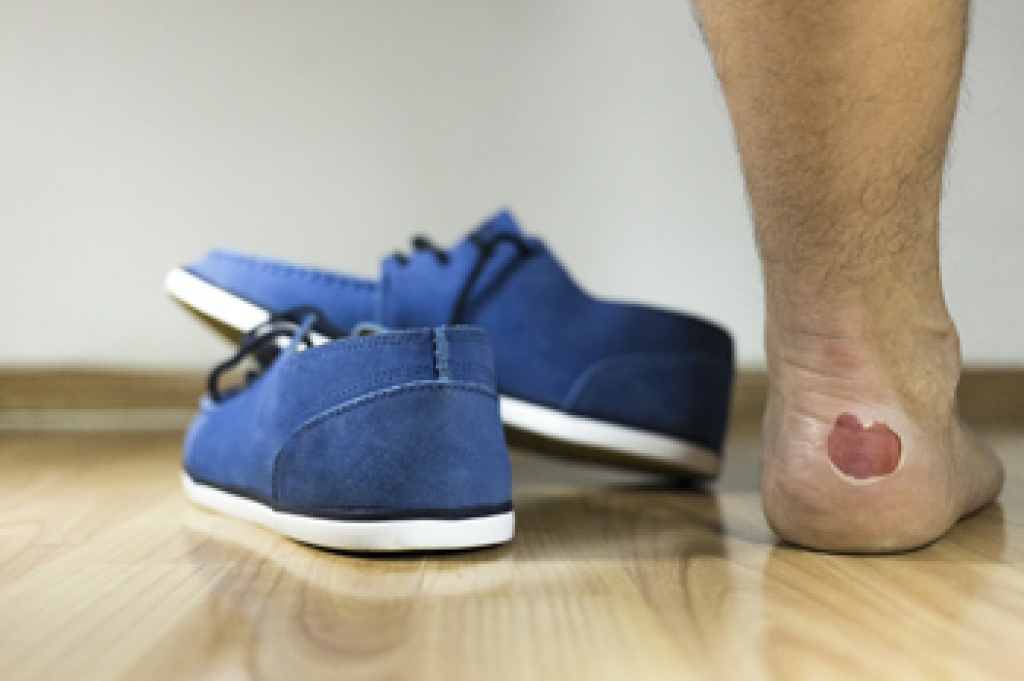
Gout is an arthritic condition that results from a buildup in the system of uric acid that crystallizes in the joints and causes inflammation. Gout can flare up overnight and last for a week or so before calming down. There are a few stages of gout, including asymptomatic, acute, interval or intercritical, and chronic tophaceous. Pseudogout is often confused with gout because the symptoms are similar even though the causes differ. This type of gout is actually caused by the crystallization of calcium deposits, and the flare-ups are less severe. The main symptom of gout is excruciating pain, commonly in the big toe, redness, swelling, and stiffness. A person can have high uric acid levels without experiencing the symptoms, but this can ultimately cause tissue damage. Acute gout flares up suddenly, and interval gout is the period between flare-ups. These intervals may become shorter, but because uric acid continues to build up, gout may become chronic. This is the most painful form of gout and can develop into kidney disease if not treated. If you believe you have any form of gout, it is suggested that you consult a podiatrist for treatment options.
Gout is a painful condition that can be treated. If you are seeking treatment, contact Kellvan Cheng, DPM from Elite Foot & Ankle. Our doctor will treat your foot and ankle needs.
What Is Gout?
Gout is a form of arthritis that is characterized by sudden, severe attacks of pain, redness, and tenderness in the joints. The condition usually affects the joint at the base of the big toe. A gout attack can occur at any random time, such as the middle of the night while you are asleep.
Symptoms
- Intense Joint Pain - Usually around the large joint of your big toe, and it most severe within the first four to twelve hours
- Lingering Discomfort - Joint discomfort may last from a few days to a few weeks
- Inflammation and Redness -Affected joints may become swollen, tender, warm and red
- Limited Range of Motion - May experience a decrease in joint mobility
Risk Factors
- Genetics - If family members have gout, you’re more likely to have it
- Medications - Diuretic medications can raise uric acid levels
- Gender/Age - Gout is more common in men until the age of 60. It is believed that estrogen protects women until that point
- Diet - Eating red meat and shellfish increases your risk
- Alcohol - Having more than two alcoholic drinks per day increases your risk
- Obesity - Obese people are at a higher risk for gout
Prior to visiting your podiatrist to receive treatment for gout, there are a few things you should do beforehand. If you have gout you should write down your symptoms--including when they started and how often you experience them, important medical information you may have, and any questions you may have. Writing down these three things will help your podiatrist in assessing your specific situation so that he or she may provide the best route of treatment for you.
If you have any questions, please feel free to contact our office located in Carrollton, TX . We offer the newest diagnostic and treatment technologies for all your foot care needs.








